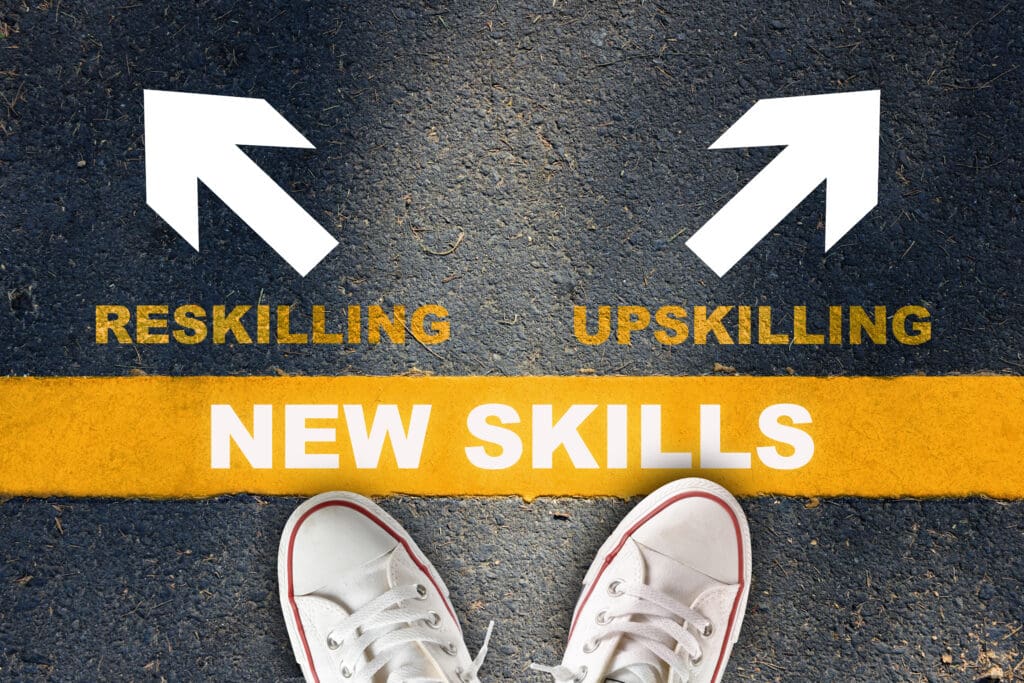Shorter may be better when it comes to executing workforce training. Here’s how.
By Christa Elliott
Five to 10 seconds -that’s the time it takes for a person to decide to either stay engaged with a piece of content or, more commonly, to move on to something else. Many will attribute waning attention spans to the tech-heavy upbringing of Generation Y, but the shifting preference for micro-learning over deep focus activities isn’t reserved for the young. It’s a product of the modern world, and it’s happening across the globe.
What it means to think small. So what is micro-learning exactly? It’s e-learning delivered in small doses that are simple, easy to digest, and pertain to a fairly narrow topic. Examples could be a three-minute training video or a short learning module accessible via mobile. Its goal is always to prevent learning fatigue and information overload. “Most industries could benefit from micro-learning if it’s used in an appropriate manner or role,” says Eric Kuennen, vice president of employability at Pearson Education. “For example, most companies have sales professionals who have to demonstrate product or service knowledge. These individuals are in need of constant information updates that could be pushed to mobile devices via a downloadable interactive PDF or an easily accessible app.”
But micro-learning isn’t just a convenient way to deliver information; in today’s workplace it may
be essential to keeping employees on the path to professional development. According to Deloitte’s research on the modern learner, an average employee can only devote 1 percent of their work week to professional development. In a 40-hour work week, that’s only 24 minutes a week or 4.8 minutes a day.
Every minute counts, and a micro-learning format may be the only way for employers to help their workforce develop professionally. But as with any approach to learning and development, a strategy needs to be implemented for success. Here are some best practices to follow:
Get into the game with gamification. Contrary to popular belief, brevity is not the soul of engagement. That is to say that making a learning module short in length does not guarantee that employees will want to engage with it. Therefore, steps should be taken to keep employees interested and engaged in any learning content that they are given -even if that content is only three minutes long.
Gal Rimon, CEO of GamEffective, a provider of gamified learning solutions, believes gamification can be the key to any successful micro-learning program. This concept is any piece of learning content that is made interactive by incorporating game-like elements. Examples include quizzes, simulations, trivia questions, or any interactive feature that requires the participant to use the information they just learned to accomplish a virtual objective.
“At the beginning, we tried to use tiny pieces such as videos, presentations, quizzes, trivia games, and simulations, and it worked well,” explains Rimon. “But when we composed something that we call a ‘short-learning sequence’ that usually contains very short content and then immediately after asked a few questions, we ensured that the learner understands what they retained.”
Rimon finds that the activity helps employees retain the information. “When you are active or engaged in what we call ‘actionable learning,’ it is easier to remember what you’re learning,” he says. “Because you are doing something and have to make a choice, you are more likely to keep this piece of information for later use.”
Using gamified micro-learning programs, GamEffective raised training completion rates for some of its Fortune 500 clients from the average of only 30 percent to around 80 or 85 percent.
Make the content timely. Personal, real-world context is another essential component of the engagement equation. Employees are more inclined to consume content if they feel that it’s relevant to their current developmental needs. For example, a sales employee is more likely to recognize their need for customer service training if they have recently struggled to meet their sales quota.
“Usually the solution for a performance problem is learning; however, usually when training or HR provide learning, they take 40 hours of learning or sequences and sometimes spread them over the year. It might be every month or every week, but it doesn’t make sense because the context is lost over that time,” explains Rimon. “What we try to do in our system is that whenever you have a problem or challenge or opportunity … the system will try to look for the next best action, which usually would be micro-learning. So whilst you’re working and struggling to meet your target, the next two or three minutes that you will invest would be for learning and be very relevant to your challenges.”
In short, learning content -micro or otherwise -should never be delivered either randomly or on a permanently set schedule throughout the year. Instead, content should be delivered in reaction to events -such as onboarding or the introduction of new policies -or in response to specific challenges an employee faces at work. This, in turn, will lead to higher completion rates and improved employee performance.
Offer mobile access. Given the quick and easy format of micro-learning, these programs also lend themselves well to mobile optimization for added convenience. All micro-learning training components should be mobile-friendly and allow learners to access content from anywhere. Statistics for 2016 show that mobile usage and smartphone ownership continues to climb globally as there are now more than 2.08 billion smartphone users around the world. Despite these staggering numbers, research conducted by Deloitte showed that only 6 percent of employers rate themselves as excellent at providing mobile learning; only 6 percent rate themselves as excellent at incorporating Massive Online Open Courses (MOOCs) into their learning and development programs; and only 5 percent rate themselves as excellent at using advanced media such as video, audio, and simulations.
Needless to say, there is still considerable room for growth when it comes to making learning programs more mobile-friendly, especially since almost all mobile learning must be micro in nature. Content that is easy to access creates more opportunities for employees to engage and creates the option to do so on their own schedule.
“On-demand design provides the searchability and accessibility learners have grown accustomed to having,” Kuennen says. “The mobile-accessible workforce is also the ideal audience for bite-sized pieces of content like articles, videos, or infographics.”
Consider cultural preferences. With any HR-related program, there are also cultural and social considerations to be made during development, especially when the employer is a multinational corporation. Learning programs are not one-size-fits-all, and what may be considered motivating and entertaining to one culture, could be considered offensive or confusing to another.
“Gamification has a lot of psychology and cultural aspects. In the east, they are often more team-oriented and in the U.S people are more individual, more competitive in sales, and more collaborative in service,” explains Rimon. “So it’s very important to understand the culture in order to create the narrative or envelope that surrounds the learning materials.”
Cultural considerations also include gender issues and age issues, says Rimon. These concepts extend beyond global cultures and into corporate cultures as well. In many cases, the preferences of a multinational corporate culture can have an even more powerful impact than a geographical culture.
Keep it short no matter what. When stakeholders, executives, and others all want a say in what content stays or goes, it can be easy to lose sight of the “micro” part of micro-learning. It is important to make sure that this doesn’t happen. For better or for worse, significantly reducing the length of content means that some content will not make the cut. Otherwise, potentially “micro” content remains “macro” and defeats the entire exercise.
“The main obstacle to the success of micro-learning in particular is the tendency for stakeholders to keep adding material to the training until it’s not ‘micro’ anymore,” says Gregg Collins, senior vice president of design for NIIT. “It’s a classic ‘ratchet’ effect. People often have an idea for something that would be nice to add to any given body of training material, but they don’t often have the corresponding impulse to take something away. So the training gets longer the more people interact with it.”
To prevent counterproductive input -however well-meaning its source -learning and development project managers must clearly state specific project goals from the outset. If every member of the team knows from the beginning that content needs to be reduced by 40 percent, for example, they will probably be more understanding when one of their ideas can’t be included in the final product.
Is the Micro Model Right for Everything?
Micro-learning can be a valuable tool for employers looking to connect with the modern corporate learner, but it isn’t the ideal approach for all learning topics. Subjects that are complex, or where precision is important, are better suited to deep learning tactics.
“There are still advantages to concentrated, longer-lasting training events,” Collins says. “For example, you probably don’t want to fly with a pilot who has only done aviation training in micro-bursts. At some point you’d like to know that she has worked through some extended training sessions, whether simulated or real. You probably wouldn’t enjoy trying to learn to play a Beethoven sonata in three-minute bursts either. Sometimes the complexity of what you are training people to do requires more time.”
Collins also finds that the individualistic nature of micro-learning creates limitations. “It’s still often useful to get a cohort of learners together for an extended period, both because it can be the most practical way to manage time, and because there is a bonding effect between learners that takes time to emerge,” he says.
With advancements in today’s technology, micro-learning can be an excellent way to engage corporate learners with fun, interesting content that they can access whenever and wherever is most convenient. The need for micro-learning speaks deeply to the rise of employee-centric corporate cultures -cultures that recognize the numerous demands placed on employees’ time and energy and try to assist them on the road to professional success. Creating learning and development programs that accommodate the needs and preferences of employees is a crucial step in this process, and in today’s digital world, this means trimming the fat and making micro-learning part of the equation.














